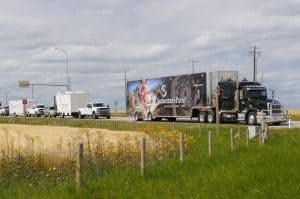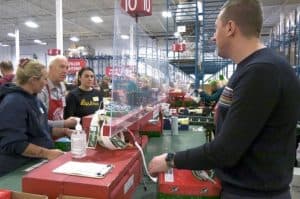Volunteers from Samaritan's Purse rebuild earthquake and tsunami-hit homes in Japan.
Written by Shiro Yoneyama
Published by The Mainichi Daily News on Tuesday, March 20, 2012
SENDAI — Chikara Fujieda, 65, says he would not have been around to relate the horrors of a menacing tsunami triggered by the Great East Japan Earthquake if he had hesitated one more moment before fleeing his house in Sendai’s Miyagino Ward on March 11, 2011.
Fujieda, his 64-year-old wife, 39-year-old daughter, 13-year-old grandchild and their pet dog, a miniature-dachshund, fled in two vehicles before a two-meter-tall tsunami swallowed up their house. “Telephone poles were falling down one after another around my house,” he says. “If we waited one more minute, it was over.”
He says some 60 people in the ward’s Okada-Shinhama district alone perished in the tsunami. As he relates his March 11 episode, out-of-town volunteers are busy clearing mud out from his house and restoring it.
“I am taking out a mortgage on my house for the last time,” says Fujieda who works for a firm to manufacture and sell temporary housing units. He sometimes visits his house surrounded by a large volume of mud to check on the restoration work.
One of the volunteers working in his house is Yuki Yagisawa, a 24-year-old from Sano, Tochigi Prefecture, who has been clearing mud and repairing the interiors of submerged houses in Sendai as a member of a relief team under the auspices of Samaritan’s Purse, an international Christian relief organization headquartered in Boone, North Carolina.
At another damaged house near Fujieda’s home, three Americans-Steve Clymer, Mike Whelan and Valerie Erwin-are refurbishing its interior. Clymer, a carpenter, says the closet is the most tedious part of the rebuilding process. Asked about cold weather this winter in Sendai, he replies, “I live in the mountains of North Carolina. The weather is very similar.”
Samaritan’s Purse is also working with other religious organizations such as the Cumberland Presbyterian Church in Sagamihara, Kanagawa Prefecture.
Takashi Kanazashi, 40, from Hachioji in suburban Tokyo, was one of volunteers from the Sagamihara church. Kanazashi, who teaches English at Nihon University, says he is staying here for several days to clean out flooded houses.
But according to non-Japanese members of Samaritan’s Purse, local residents initially watched foreign volunteers with skepticism as they started clearing muck and debris from flooded houses in May.
The twin natural disasters left more than 19,000 people dead or still unaccounted for, including nearly 9,500 casualties and over 1,750 missing people in Miyagi Prefecture alone.
But residents began to become receptive to offers from Japanese and foreign volunteers to reconstruct their houses and Samaritan’s Purse and its partners are gradually winning over skeptical local contractors.
Fujieda in Miyagino Ward, for example, says he is looking forward to seeing his fully rebuilt home around August after professionals succeed the volunteers to put the finishing touches on his house.
Samaritan’s Purse currently conducts its Japanese disaster relief project out of three bases-Kesennuma, Shichigahama and Tome-in addition to its Sendai office. Brianna Oliver, program manager in charge of communications and development, says a total of about 5,000 Japanese and foreign volunteers from the United States, Canada, Brazil, Germany, Australia and other countries have cleared mud from more than 300 households and built or are building over 340 houses while distributing more than 4,100 home kits such as bedding and kitchen utensils.
Oliver says her organization hopes to complete construction of 400 houses by the end of April, when the Japan project is due to end.
Craig Thompson, assistant construction manager, says roughly 50 people are normally at each base. Thompson, of Houston, Texas, says that once he completes his mission in Japan, he hopes to return to China to help orphans there again.






